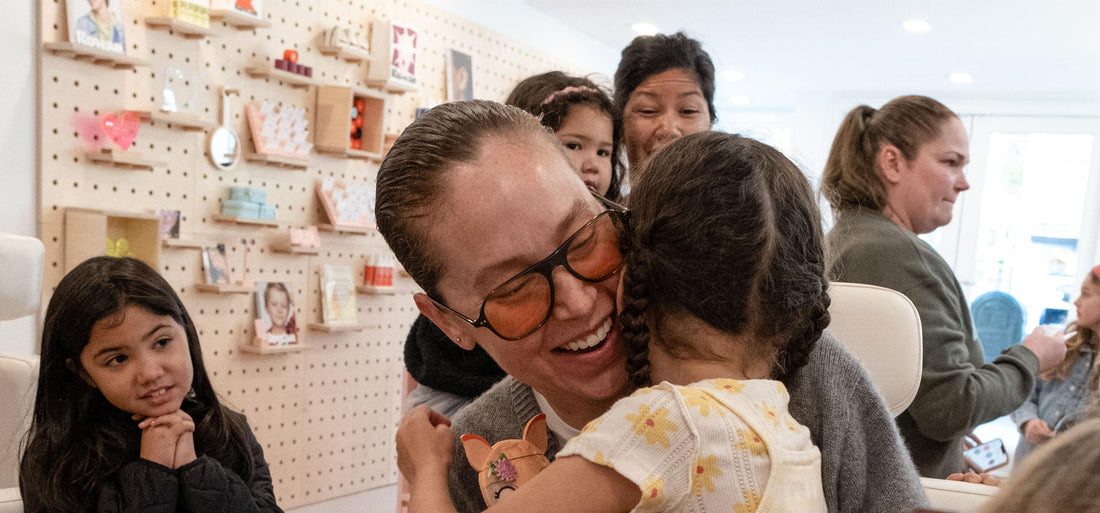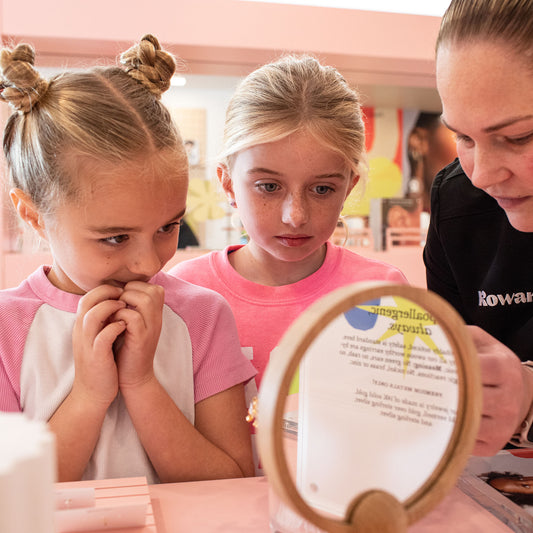How to Manage Piercing Pain For Children

Everyone remembers their first piercing! The excitement leading up to your appointment, getting to choose your jewelry, and the people who were there to celebrate with you are often fond memories that mark the experience. For many kids, the anticipation of their first ear piercing is accompanied by thoughts of how painful it will be. While ear piercing itself doesn’t cause a great amount of pain, the fear of pain can worsen the perception.
Managing pain after children’s ear piercing is a blend of preparation, understanding, and attentive aftercare. Parents/guardians should be armed with the right knowledge and tools to ensure their children’s ear piercing experience is positive and free from complications.
Here’s everything you need to know to help your child stay calm, cool, and collected during their first ear piercing!
Understanding Ear Piercing Pain
Piercing involves introducing a wound into the ear. This is done by either a hand-pressured device or a hollow-bore needle. As the tissue is being pierced, you may experience a brief pinching sensation followed by an influx of heat. Although it is often compared to receiving an injection at the doctor’s office, having your lobes pierced is far more comfortable than being vaccinated.
Several factors influence pain perception in children:
Age: Younger children might find the pain more intense because of their heightened sensitivity.
Individual Pain Threshold: Some children naturally have a higher pain tolerance.
For more about the general process, parents can refer to this article, which provides a comprehensive guide to ear piercing for kids.
Piercing of the lobe is best described as a “pinch” with discomfort that lasts for a few seconds, followed by a dull ache and warmth in the area. The dull pain can last for several hours to days; however, with proper care, the discomfort should diminish with each passing day.
It’s important to note that our research has found no significant difference between the pain felt from a piercing by needle vs a piercing from our hand pressurized device.
Managing Ear Piercing Pain
Managing the discomfort associated with pediatric ear piercing isn’t as daunting as it seems. Here are some effective techniques to consider:
Cold Compress: Applying a cold pack can help reduce swelling and alleviate pain. Ensure there’s a cloth barrier between the ice and the skin to prevent frostbite.
Over-the-Counter Pain Relievers: Always consult with a pediatrician, but pain relievers like acetaminophen can be effective when given in appropriate doses.
For anxious children, preparation can also be key. Consider reading this article, which offers advice on preparing a nervous child for their first ear piercing.
Preventing Children’s Ear Piercing Pain
Post-piercing care can significantly impact the healing process and the overall discomfort experienced.
Here’s a quick “script” to follow to teach your child about the importance of aftercare: “Piercings are wounds/boo-boos/cuts that we have to keep clean so they can get better. We have to use the special spray 2-3x/day and make sure we don’t touch or play with earrings except for when we’re cleaning them.”
These more specific tips can help:
Regular cleaning: Here’s a tip to help your child remember to use their Advanced Aftercare 2-3 times a day to prevent infections - “Let’s keep your aftercare spray near your toothbrush - this way every time you brush your teeth you can also clean your ears”
Avoid touching the piercing: Educate children about the importance of not touching their new piercings to prevent bacteria transfer and potential infections. You can say - “Everything has germs. We don’t want to touch anything germy and then touch our ears. Only touch your ears when you are cleaning them after you wash your hands with soap and water.”
Keep long hair away from the piercing: Keeping hair tied back will help prevent it from getting caught in the earrings, potentially causing an infection or snagging the jewelry. Tell your child - “Be super careful with your hair. If it gets caught in your new earrings it can hurt a little bit. Let’s style your hair in a ponytail or braid.”
Concerning Ear Piercing Pain (And Potential Infection)
Post-ear piercing care is crucial. Parents should be vigilant for signs of infection, such as increased redness, swelling, puss, or if the pain escalates after the first day. If the child develops a fever or the area around the piercing becomes hot, these could be signs of a more severe infection, and it's essential to seek medical advice immediately.
Parents can also refer to this article for more information on the safety of ear piercing for very young children.



